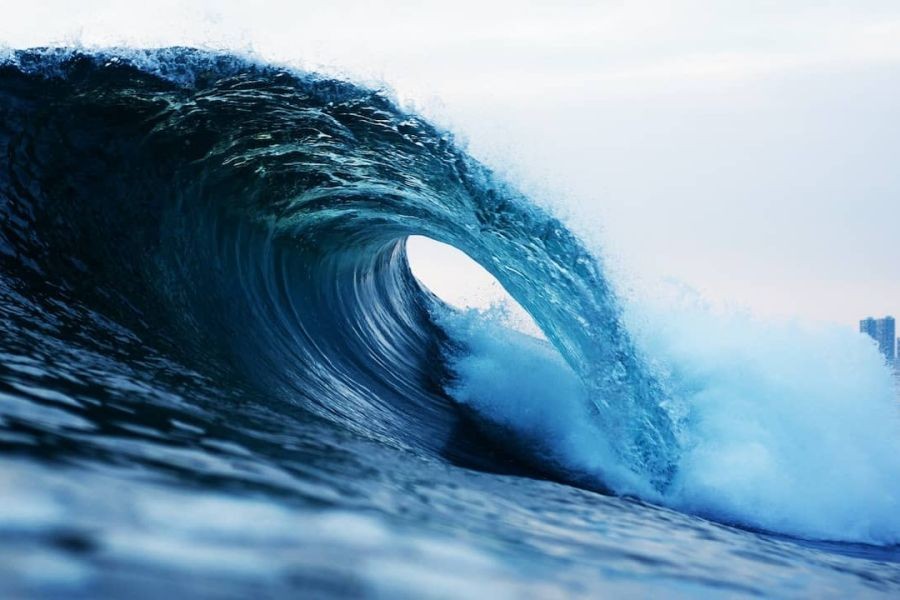Harnessing the power of the ocean's tides is not just a futuristic dream; it's a tangible reality that New Zealand, with its extensive coastlines and rich maritime heritage, is well-positioned to explore. As the world faces pressing energy challenges, tidal energy infrastructure offers a sustainable solution that aligns with New Zealand's commitment to renewable energy. But how exactly does one build tidal energy infrastructure in coastal regions, and what unique considerations apply to the New Zealand context?
Understanding Tidal Energy: A Deep Dive
Tidal energy harnesses the natural ebb and flow of ocean tides to generate electricity. Unlike solar or wind energy, tidal power is highly predictable, offering a reliable source of renewable energy. The technology primarily involves underwater turbines that capture kinetic energy from moving water and convert it into electricity. New Zealand's geographical location provides an ideal setting for such infrastructure, with areas like the Cook Strait and Kaipara Harbour offering strong tidal currents suitable for energy generation.
The Mechanics of Tidal Energy Systems
Tidal energy systems can be categorized into three main types: tidal stream systems, tidal range systems, and dynamic tidal power. Tidal stream systems utilize underwater turbines placed in tidal streams, functioning similarly to underwater wind turbines. Tidal range systems, on the other hand, rely on the difference in height (or range) between high and low tides, often using barrages or dams. Dynamic tidal power, a less common approach, exploits the interaction between tidal movements and large-scale structures placed perpendicular to the coast.
Case Study: The MeyGen Project
Case Study: MeyGen – Harnessing the Power of the Pentland Firth
Problem: Situated in Scotland, the Pentland Firth is known for its powerful tides, making it an ideal site for tidal energy development. However, the challenge was designing a system that could withstand harsh marine conditions while efficiently capturing tidal energy.
Action: The MeyGen project, launched by Atlantis Resources, implemented a series of tidal stream turbines capable of generating sustainable electricity. These turbines were installed on the seabed and designed to endure the demanding marine environment.
Result: The MeyGen project successfully generated significant amounts of renewable energy, with the capacity to power thousands of homes. It demonstrated the feasibility of large-scale tidal energy projects and provided valuable insights into technology and deployment strategies.
Takeaway: The success of the MeyGen project illustrates the potential of tidal energy systems in regions with strong tidal currents. For New Zealand, similar approaches could be adapted to local conditions, providing a sustainable energy source while supporting national energy goals.
Comparative Analysis: New Zealand's Potential
New Zealand's energy landscape is unique, given its diverse renewable energy sources, including hydroelectric, geothermal, and wind power. However, tidal energy remains largely untapped. According to a report by the Ministry of Business, Innovation and Employment (MBIE), New Zealand's potential for marine energy could contribute significantly to its renewable energy portfolio.
Pros and Cons of Tidal Energy Infrastructure
Implementing tidal energy infrastructure in New Zealand comes with its set of advantages and challenges:
- Pros:
- Predictability: Tidal currents are highly predictable, providing a reliable energy source.
- Environmental Impact: Tidal energy is considered more environmentally friendly compared to fossil fuels, with minimal emissions.
- Economic Opportunities: Developing tidal energy projects can create jobs and stimulate local economies.
- Cons:
- High Initial Costs: The construction and deployment of tidal infrastructure can be expensive compared to other renewable energy sources.
- Environmental Concerns: Potential impacts on marine ecosystems and navigation must be carefully managed.
- Technological Challenges: The harsh marine environment poses challenges to the durability and maintenance of equipment.
New Zealand's Unique Position
New Zealand's commitment to renewable energy is evident in its policies and investments. The government has set a target of achieving 100% renewable electricity by 2035, which includes exploring marine energy's potential. As highlighted in a 2023 report by Stats NZ, renewable energy sources currently account for over 80% of New Zealand's electricity generation, with significant room for growth in marine energy.
Opportunities for Local Industries
Building tidal energy infrastructure presents opportunities for New Zealand's local industries, including technology development, engineering, and environmental management. Collaborations with research institutions, such as the University of Auckland, can drive innovation and technical expertise, positioning New Zealand as a leader in marine energy technology.
Debunking Common Myths
Several misconceptions surround tidal energy, particularly concerning its feasibility and impact:
- Myth: Tidal energy is too costly to be viable. Reality: While initial costs are high, advancements in technology and economies of scale are reducing expenses, making tidal energy increasingly competitive.
- Myth: Tidal energy harms marine life. Reality: Studies, such as those by the University of Otago, indicate that with proper site selection and technology design, impacts on marine ecosystems can be minimized.
- Myth: Tidal energy is unreliable. Reality: Tidal energy is one of the most predictable forms of renewable energy, offering consistent power generation based on tidal patterns.
Future Trends and Predictions
The future of tidal energy in New Zealand looks promising, driven by technological innovations and supportive government policies. By 2030, it is predicted that tidal energy could contribute significantly to the country's renewable energy mix. According to a Deloitte report, advancements in turbine technology and materials will enhance efficiency and reduce costs, making tidal energy a viable alternative to traditional energy sources.
Additionally, global trends indicate increasing investments in marine renewable energy, with countries like Canada and the UK leading the way. New Zealand can leverage these developments by adopting best practices and fostering international partnerships to accelerate its tidal energy projects.
Conclusion: Navigating the Tidal Energy Wave
Building tidal energy infrastructure in New Zealand's coastal regions holds immense potential for sustainable energy generation. By leveraging its natural resources and fostering innovation, New Zealand can position itself as a leader in marine renewable energy. As the nation strives towards a greener future, tidal energy offers a reliable and environmentally friendly solution that aligns with its renewable energy goals.
What are your thoughts on the future of tidal energy in New Zealand? Share your insights and join the conversation below!
People Also Ask
- How does tidal energy impact New Zealand's economy? Tidal energy could significantly boost New Zealand's renewable energy sector, reducing reliance on fossil fuels and creating jobs in marine technology and engineering.
- What are the challenges of building tidal energy infrastructure? High initial costs and environmental concerns are key challenges, but technological advancements are addressing these issues.
- Is tidal energy a reliable source of power? Yes, tidal energy is highly predictable, offering a consistent and reliable source of renewable energy.
Related Search Queries
- Tidal energy projects in New Zealand
- Renewable energy targets New Zealand 2035
- Marine energy technology advancements
- Environmental impact of tidal energy
- Cost comparison of renewable energy sources
- Future of marine renewable energy
- Government policies on renewable energy in New Zealand
- New Zealand energy market trends
- Innovations in tidal turbine technology
- Sustainable energy solutions for coastal regions


































AmeliaOSha
8 months ago